
100 Bay Street
Sausalito, CA, US, 94965
Tel:415-331-6200
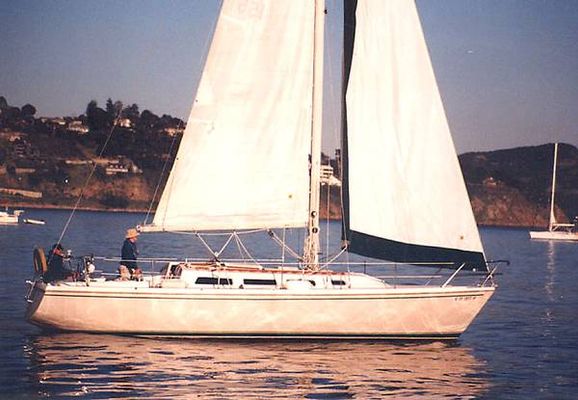
1986 Catalina Sloop
With almost 3,000 hulls launched since it's introduction 1982, the Catalina 36 is one of the most popular 36 foot sailboats ever built, and a quick inspection makes it easy to understand why: they are well-designed and well-built in the U.S. by one of the most successful sailboat builders in the world (click on FULL SPECS above for an article about Catalina from Professional Boatbuilder magazine), are very spacious (both above and below deck), easy and fun to sail even short-handed, and are equally at home racing, daysailing or cruising (Cruising World says the Catalina 36 is "a happy blend of conservative, medium-displacement cruising logic and spry one-design racing potential"). Note that there is an active Catalina 36 Owner's Association, with their own web site with much useful information (do a quick search on Google to reach).
This particular example low time (only about 400 hours on the Universal diesel) example shows very nicely inside and out, with the brightwork in particular showing well.
Note she's lying in a potentially transferable downtown Sausalito Yacht Harbor slip; there's a long wait to get into the marina here so this is a material benefit if you're able to take advantage...
Vessel shown by appointment, please.
Specifications
Engine 1 Specifications
Media Gallery
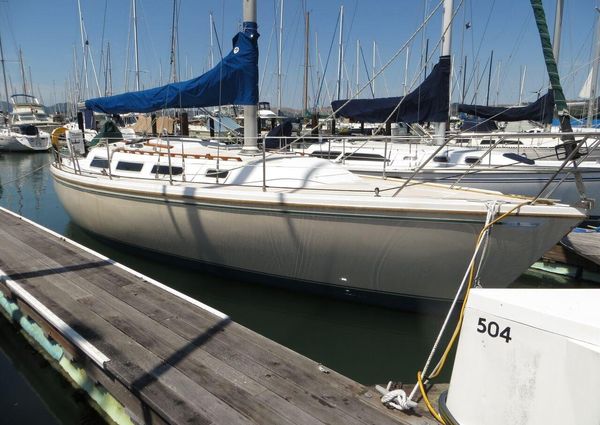 |
 |
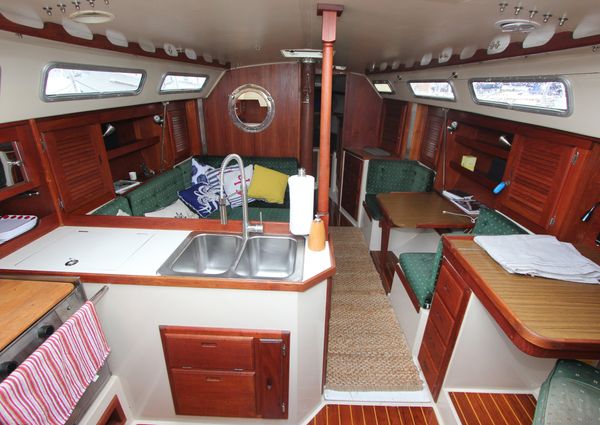 |
 |
 |
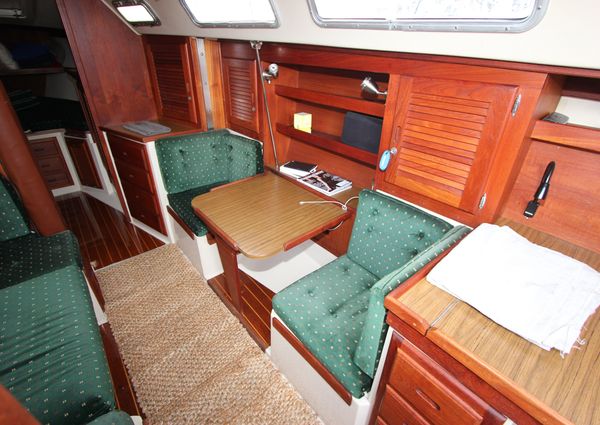 |
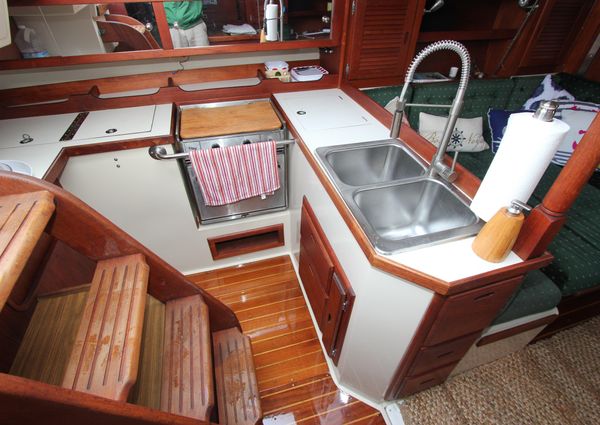 |
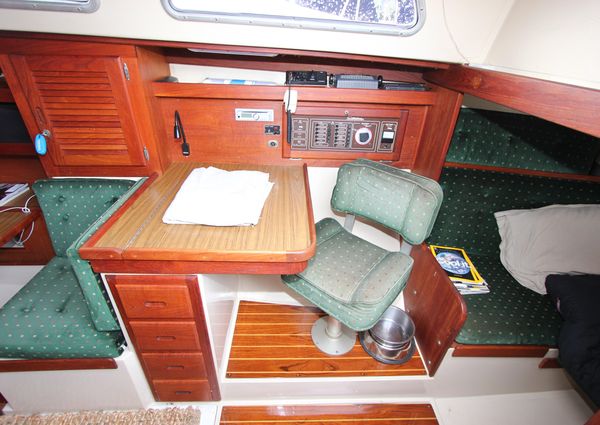 |
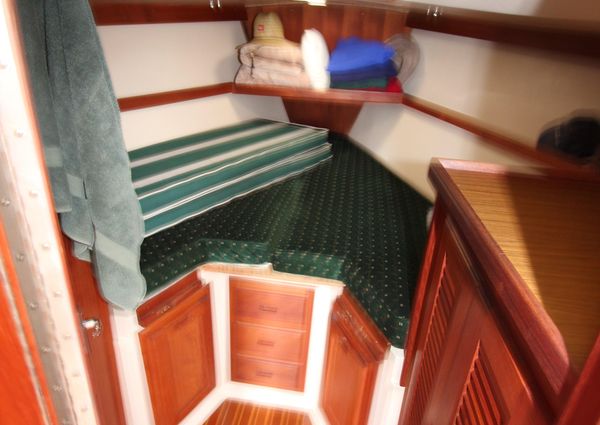 |
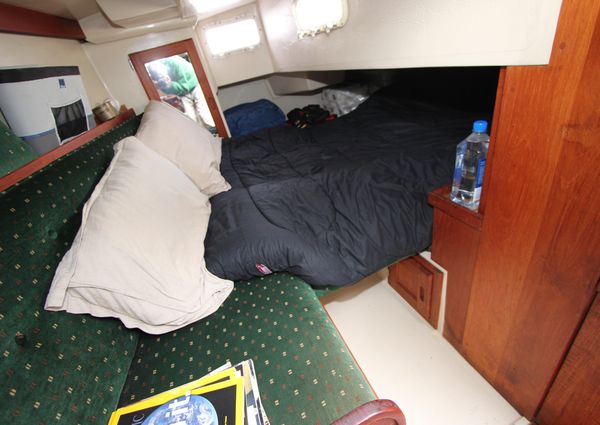 |
 |
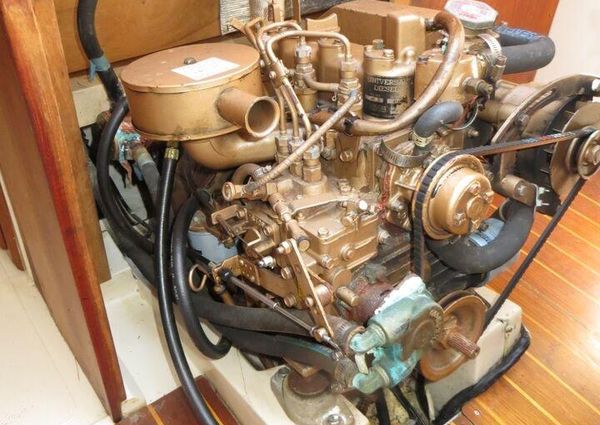 |
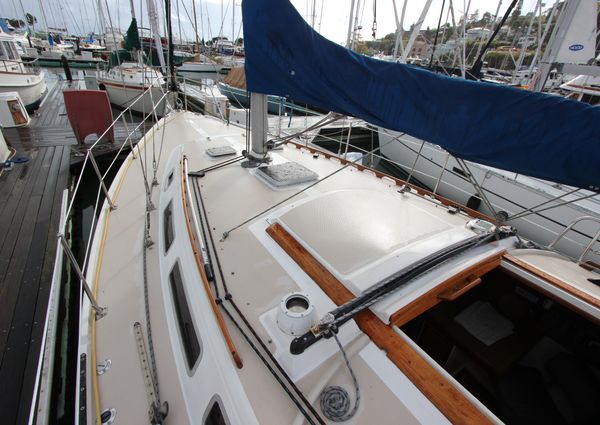 |
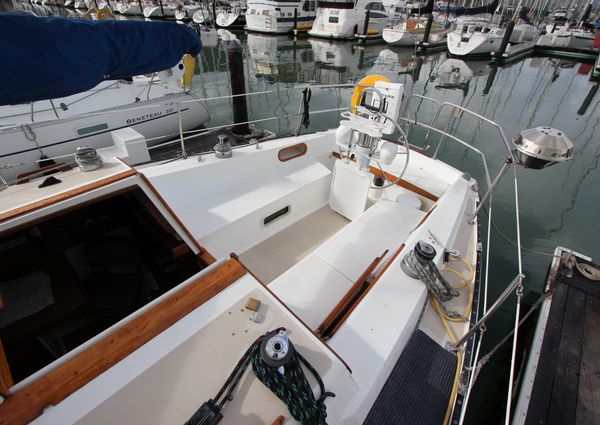 |
Large V berth forward with two deck lights and large opening hatch as well as hanging locker and ample storage. Next aft port is head with wand shower.
Next aft is salon with large u-shaped dinette which drops down to form double berth. Six-foot-plus settee across starboard. Note this is unusual option, as most of these vessel had two seats with table in between.
Proceeding aft, u-shaped galley is port side with large, comfortable nav station with built-in swivel chair across on starboard. Far aft port side is double berth port with pass-through to galley and settee/sea berth opposite starboard.
Note.interior extensively refurbished including teak & holly sole stripped and refinished with Epifanes varnish (it looks beautiful!), new LED lighting installed throughout, interior is SPOTLSS and shows much newer than actual age.
Gimballed two burner CNG stove with oven, twin deep stainless steel sinks with hot/cold pressure water, hot/cold pressure water, top loading ice box. Manual pump toilet with macerator.
Garmin 740 GPS, Autohelm wind speed/direction indicator, West Marine VHF radio, Rtchie magnetic compass. Dual AM/FM/CD stereo.
110V AC / 12V DC. 30 amp shorepower service, two batteries with parallel switch, Xantrex True 40 amp battery charger.
Keel stepped single spreader mast, newer main in very nice shape, 110% jib on Harken roller furler, standing rigging checked regularly by South Beach Riggers. Two self tailing Lewmar #30 winches, two #26 Lewmar winches. Boomvang and Lewmar mainsheet with Schaeffer traveller, inboard and outboard genoa tracks.
Fin keel with spade rudder, one piece hull and deck molds of single skin gelcoat over multiple fiberglass laminates and complete hull liner bonded at deck/hull, fiberglass deck with light gray contrast non-skid inserts and varnished grab rails on cabintop, boat last hauled and bottom painted in Feb. 2015.
Stainless steel bow & stern pulpits, stainless steel stanchions with double lifelines, stainless steel swim ladder.
Regularly serviced Universal three-cylinder fresh water cooled 25 hp diesel engine with Hurth transmission, 1" stainless steel shaft thru bronze strut to two-bladed bronze prop, Edson wheel, cable and quadrant steering
For anyone who still subscribes to the misconception that there’s no market for new sailboats, a visit to Catalina’s Woodland Hills plant in the Los Angeles area would be an eye-opener. The enormous factory building, originally set up to fabricate Saturn rocket engines for the Apollo moon flight program, consistently runs at full capacity—three shifts a day. At any given time there are approximately 60 cruising sailboats ranging in length from 27’ to 42’, making their way down the assembly lines in the main production area. Add another half-dozen hulls still in the molds—bearing in mind, too, that Catalina also operates a second, sizable facility in Florida (the Morgan plant in Largo)—and it becomes absolutely obvious that folks out there somewhere are buying new sailboats in serious numbers.
That “somewhere” for Catalina is primarily in North America, although the company also has a growing volume of sales throughout Europe and the Pacific Rim. Southern California—particularly San Diego and Los Angeles—represents Catalina’s traditional home market and still generates a substantial share of total sales. Although this firm does not disclose its sale figures, Catalina is generally considered to be the country’s largest sailboat manufacturer.
Catalina Yachts has remained under the close control of its founder, Frank Butler, for nearly a quarter century—no restructuring, no public stock issues. This fact alone makes the company a relative rarity in the boatbuilding industry, especially the notoriously volatile sailing sector.
“A small company with lots of employees,” is how Gerry Douglas, vice president and chief engineer at Catalina, sums up the overall structure of the firm. In effect, just three people—Butler, Douglas, and sales manager Sharon Day—“run” Catalina, whose work force averages around 350 people. Douglas and Day have teamed with Butler for over20 years and continue to play critical roles in the company’s development.
For such a lean management style to function successfully, Catlina’s officers must spend a great deal of time on the shop floor. Company meetings are held periodically to discuss policy, but informal conferences with key employees are day-to-day events. “The input of the people who are hands-on is always the most valuable,” Douglas explins, “and by and large, ours is a pretty free exchange.”
Historically, privately owned boatbuilding companies have tended to stay in business longer than those controlled by distant boards of directors. Clearly an intimate knowledge of boating, boatbuilding, and the many idiosyncrasies of the marine industry are prerequisites for success in this field. All the same, few privately owned production firms have managed to keep their doors open as long as Catalina, and even fewer have garnered anything approaching the market share that Catalina currently enjoys. But, there’s more to the Catalina story than micro-management and private ownership.
The Production Line
Catalina offers few surprises in its construction techniques. The typical boat begins in conventional female molds with an isophthalic gelcoat and skin coat. Decks are generally cored with balsa and plywood, while hulls consist of a single-skin lamination of conventional roving and mat. More and more, however, knitted biaxials are being used for reducing panel weights and for local reinforcement, particularly in the performance-oriented Capri models as well as the Catalina “contemporary” series (C-250, C-270, C-320, and C-400).
A molded hull liner, or pan, defines the interior layout and helps stiffen the hull; a comparable overhead liner finishes the underside of the deck molding. In may models, the hull liner incorporates aluminum angles in way of the chainplates, and these, as well as the sprayed urethane icebox insulation, are installed before the liner is secured to the hull.
Liners are bonded into place while the respective hull and deck parts are still in the mold, by using a large number of metal weights strategically positioned to provide suitable clamping pressure. Vacuum-bagging is inappropriate for this application because substantial clamping forces are needed in contact areas, but none where the parts are separated by air spaces.
Meeting Southern California’s stringent air quality standards—currently the nation’s toughest—has created special challenges for the laminating department at Catalina. Styrene-suppressed resins are now the norm, requiring extra care to ensure reliable secondary bonds. Dibasic ester (DBE) has been substituted for acetone as the primary cleaning solvent, and 160’-tall high-velocity exhaust stacks propel fumes to an altitude of around 500’ to better disperse residual odors. In addition, although the plant as a whole runs 24 hours per day, gelcoat spraying and laminating are restricted to night hours. This is primarily an exercise in good neighbor relations—averting complaints from office workers in adjoining buildings—since volatile organics are held within legal limits.
At Catalina, hulls and decks link up quite early in the production sequence, often before engines, systems, and most wooden components have been installed. A corollary of this approach is that interior components must be designed to fit through the companionway. Not surprisingly, the companionway on most models is unusually large, a popular feature among owners in the mild California climate.
Unlike many other builders in the production sailboat field, Catalina favors the shoe-box type hull-to-deck joint for a majority of models up to 42’ in length and, despite occasional criticism from competitors, reports excellent long-term success with it. A strip of plywood sandwiched between the upper margins of the hull molding and hull liner serves as a sheer clamp to stiffen the joint area and to “hold” fastenings. The vertical overlap area is bonded with polyester putty and mechanically fastened using a combination of through-bolts and self-tapping screws. The largest boats in the product line have a more conventional horizontal flange joint, through-bolted and sealed with polysulfide.
Keels are external lead/antimony castings, held in place by embedded stainless bolts. Spade rudders with mechanical wheel sterring are common to almost all Catalinas; most of the Capri models have tillers.
In-House Subcontracting
Modern cruising sailboats incorporate all the mechanical, electrical, and plumbing systems found in aboard comparable power boats, and quite a bit more besides. Consequently, the glass parts make p a significantly smaller proportion of the total package in terms of both labor and cost. In addition to woodworking and upholstery (routinely handled in-house by many production boatuilders), Catalina performs the majority of its keel casting, sparmaking, rigging, shipping cradle fabrication. Metalwork, sailmaking, and canvaswork. Complex manufactured components such as engines, winches, and pumps are obtained from vendors, but in product areas where major new capital investment is not involved, there’s often money to be saved by making these items in-house rather than “outsourcing” them. Besides, Gerry Douglas cites the benefits of assured supply lines and reports that when purchasing “from the outside,” Catalina routinely cultivates several alternative sources for each key item.
The company’s model sail loft builds primarily “plain vanilla” Dacron mains and jibs—the working sails needed to get out on the bay. In fact, the great majority of Catalina buyers are daysailors and coastal cruisers who use these sails as the backbone of their inventories. Even those with racing aspirations generally appreciate the factory sails for cruising and casual use. Similarly, the Catalina spar shop fabricates straightforward masthead rigs with swaged-terminal 1X19 wires. The more sophisticated, tapered masts seen on certain models, though, are purchased from outside sources.
Stainless steel pulpits, stanchions, and other deck fittings are fabricated at a separate but nearby facility. Dealers have been especially appreciative of the robust stainless frames supplied with Catalina’s factory-built dodgers, because they’re visibly superior to the lightweight aluminum frames prospective customers are accustomed to seeing. In this case, in-house sub-contracting provides a built-in sales advantage at minimal added cost.
Although most production builders cut their own plywood components and teak trim, Catalina has taken its woodworking a step further. In addition to a substantial woodshop in the factory itself, there’s a 30,000-sq-ft facility nearby where stock is processed and subassemblies prepared. Again, this provides opportunities for product differentiation. For example, cabin soles are plywood-based, but are faced with teak and holly approximately 1/8” thick. A salesman can readily point out the aesthetic and practical advantages of this construction, which contrasts well with the thin veneer floors used by many competitors.
Product Development
According to Douglas, whose multiple roles at Catalina include that of head designer, “It’s absolutely vital to build what the customer wants and not what you as an industry insider might want.” He points out that dramatic, leading-edge technology attracts media attention, but the average family sailor has a much more conservative perspective.
The starting point for each new design is a “wish-list notebook” in which Douglas records suggestions from boat owners. Butler, Day, and Douglas all spend a good deal of time attending owners’ meetings, and boat shows. Douglas calls it “anecdotal market research,” and despite the informality, it has obviously worked extremely well for Catalina. As a result of such input, the C-320, for example, features a cockpit locker large enough to accommodate bicycles.
As mentioned earlier, most Catalina boats have “old-fashioned” masthead rigs (rather than fractional rigs), because the masthead configuration allows a generous sail area with a low center of effort. The company’s design team believes this combination ensures respectable performance in key light-air markets such as Southern California, without making the boat too tender for an inexperienced sailor to enjoy on a breezy day.
With regard to styling, most Catalina products might be described as modern but staid: that is, they look the way the average sailor today expects a sailboat to look. Critics may say the designs are bland and unimaginative, but as Douglas notes, “It’s important that the boat should not seem silly in a couple of years.” Catalina’s so-called contemporary models incorporate such Eurostyle elements as wide sterns, enclosed aft cabins, and head compartments positioned amidships. Nevertheless, in terms of execution, these details are rather understated, a distinct contrast with many, perhaps a majority of Catalina’s competitors.
The abundance of used boats is widely regarded as a major stumbling block for the sailboat industry, but in some respects Catalina has found ways to turn the situation to its advantage. By producing durable boats, providing good product support, and promoting class activities such as one-design racing, the company has cultivated customer loyalty and enhanced used-boat resale values. The narrowed gap between new product and used craft encourages, to some extent, the sale of new Catalinas. More important, depreciation lower than the industry average is frequently cited by owners as an important influencing factor in their buying decisions. Some have “bought up through the ranks” and are now on their third or fourth Catalina.
In harmony with the principle of long-term product support, four “classic” Catalina models have received makeovers during the past three years. In each case, displacement, rig, and immersed hull form were left untouched, so the new boats could join existing fleets for casual one-design racing. On the other hand, the decks and cabintops were retooled for a cleaner, more modern look; and the topsides toward the stern were flared considerably to provide extra interior volume for a contemporary aft-cabin layout. Cockpits were reconfigured to provide more space, improved seating comfort, and through-transom boarding.
The first model to receive this treatment was the C-30, a boat which has now sold over 6,500 units. Encouraged by the revitalization sales of the C-30, Catalina subsequently modernized the C-36 for ’94, and the C-28 and C-42 in ’95. In each case, by extending the market life of a popular model, the builder has profited, partly through sales, but also indirectly by preserving the resale value of existing boats.
Although Catalina is in compliance with California’s air-quality regulations, Douglas is concerned that anti-pollution standards are a moving target. In his view, good past performance by area manufacturers and fabricators is encouraging even more rigorous regulations for the future. Last year the Woodland Hills plant discontinued offering factory-applied antifouling paint in an effort to further reduce VOCs.
The Florida plant, of course, operates in another jurisdiction, and might conceivably represent a form of manufacturing insurance in the environmental arena. Although Douglas denies this part of Catalina’s business plan, he remarks that “it’s better to have two of something.”
In broad terms, there are two distinctly different ways to approach the challenge of selling sailboats in the 90’s. The tack usually taken is to develop new, exciting designs that are different enough (and presumably superior) so that they will not compete directly with all those used boats.
Catalina takes the opposite tack. The company philosophy stresses continuity and constant, but gradual, product improvement. Existing models are rarely, and rather reluctantly, discontinued; even then, the company makes an effort to maintain support of these models by providing replacement parts and giving strong encouragement to class associations. This strategy works for Catalina thanks to long-fostered brand loyalty, along with an ability to manufacture dependable boats very economically, so the cost premium associated with buying new does not become too great an impediment to sales.
Although conservative alongshore sailors are its bread-and-butter buyers, Catalina enjoys the resources to explore market opportunities in other branches of the sport. One recent addition to the line, for example, is the C-250, a water-ballasted trailerable. Another, currently undergoing development and slated for introduction this summer, is the Capri 24, a high-performance sports boat with an asymmetrical spinnaker set from a retractable bowsprit. In each case, Catalina is moving fairly cautiously into a market area where other manufacturers have demonstrated that sales potential exists.
Since its beginnings in 1972, Catalina has grown from a small boatbuilder serving the local Southern California market to major manufacturer with worldwide dealings. Product exports have increased rapidly in the ‘90s thanks to strong foreign currencies and a growing reputation for good value. With dealerships in the United Kingdom, continental Europe, Japan, Australia, Singapore, and Puerto Rico generating sales, Catalina’s prospects for further penetration of overseas markets look bright.
By cultivating customer loyalty, mainstream appeal, and a moderately priced product that ages gracefully, Catalina Yachts has not merely survived, but succeeded. It’s no surprise therefore, that Douglas is upbeat about the future of recreational sailing. As he puts it, “We’re always guardedly optimistic. We hope for the best, but we’re not naïve enough to depend on it.” Homespun philosophy, perhaps, but a sentiment the marine industry as whole can take to heart.
Source: Sven Donaldson, Professional Boatbuilder, June/July 1995, pg. 34.
Some might say Catalina Yachts builds Fords for cruising sailors; their boats are relatively well built and contemporarily styled and economically priced. While some compromises are necessary to build affordable boats in this size and price range, the fact is many of today's cruising sailors are fulfilling lifelong dreams because of Catalina's efforts to make cruising sailboats affordable to most sailors.
With nearly 3,000 boats sold over the first 26 years, the Catalina 36 is arguably the most popular sailboat of this size ever built. Designed by in-house naval architect Gerry Douglas, the Catalina 36 measures 36' 4" length overall with a beam of 11' 11". Draft ranges between 4' 5" and 5' 10" depending on year and keel configuration and designed displacement ranges from 13,500 lbs to 14,100 lbs.
The Catalina 36 hull is built of a solid laminate with fiberglass and plastic resin. No balsa or foam core is used in the hull composite although newer models do use Coremat to build up laminate thickness economically. The decks and cabin are a cored composite with either balsa wood and plywood core sandwiched between fiberglass laminates.
The deck-to-hull joint is a shoebox style which is less expensive to build and more vulnerable to damage from minor docking incidents than a more substantial flanged joint with a heavy-duty rub rail. Fiberglass liners are used extensively for interior components which are tabbed in place with fiberglass and resin or set in adhesives. The result is a sound structure but one that is sometimes difficult to access for inspection or service. The most common problems on aging Catalina 36 models are damaged and leaking deck-to-hull joints, leaking windows and hatches and perhaps some degree of osmotic blistering.
On deck the Catalina 36 features wide side decks, double lifelines and a molded toe rail for safety. There is an anchor locker and stainless steel roller at the bow for easy handling and storage of ground tackle. All halyards are led to winches at the companionway and the mainsheet traveler is mounted forward of the companionway to keep controls out of the cockpit. The cockpit of the MK II model is certainly roomier than earlier models but both have long and comfortable seating and wheel steering is at the stern.
Although there have been several minor refinements over the years, the interior arrangement of today's Catalina 36 MK II is pretty much the same as it was in 1982. There is a V-berth forward followed by a head with shower to port and hanging locker and storage to starboard. In 1993 a second door was added so that the head could be entered from the V-berth or the main saloon.
In the main saloon there is U-shaped dinette to port and two seats separated by a small table to starboard. The galley is aft to port and is complete with a double stainless steel sink, two burner stove and oven, top loading icebox and adequate storage. There is a small navigation station opposite the galley followed by a quarter berth cabin with an athwartship double berth. The size and access to the quarter berth cabin is the most notably improvement made possible by the extended beam of the MK II model.
Auxiliary power is provided by Universal/Westerbeke marine diesel engines, and depending on the year, power may be three- or four-cylinder models ranging from 21 to 30 hp.
The Catalina 36 is rigged as a masthead sloop with a single spreader mast and fore and aft lower shrouds. Two sail plans are offered; a standard rig with 555 square feet of sail area and a tall rig with 601 square feet. The mast of the tall rig is two feet taller and the boom a foot longer to account for the extra sail area. The sail area-to-displacement ratio in either case is very modest at 15.2 and 16.5 respectively.
It is always nice when there is a strong support network for used boat buyers and the Catalina 36 has one of the best. The Catalina 36 owners association has 10 fleets nationwide and a Web site at www.catalina36.org is the most impressive and helpful I have seen. All things considered, the pros certainly outweigh the cons for anyone looking for an affordable cruising boat in the 36-foot size range.
Rveiew by Jack Hornor, Naval Architect
The Company offers the details of this vessel in good faith but cannot guarantee or warrant the accuracy of this information nor warrant the condition of the vessel. A buyer should instruct his agents, or his surveyors, to investigate such details as the buyer desires validated. This vessel is offered subject to prior sale, price change, or withdrawal without notice.